There’s no question that Pink Floyd is one of the most iconic bands ever to do it. They’ve got so many big songs and each musician in the group is a leader in their discipline, particularly David Gilmour who has a legion of fans.
Among their many classic songs is the 1973 track, “Money,” which comes from their album The Dark Side of the Moon. To this day, guitarists still love to cover the song’s tremolo-laden guitar tracks which I’ll show you how to get today.
To get the tremolo guitar part in Pink Floyd’s song “Money,” you’ll need a tremolo pedal with the rate set to 1/16 notes at 126 BPM, a square wave setting, and the depth effect set close to 60% of the maximum. Also, use a clean guitar tone, reverb, delay, and a Stratocaster with the treble pick-up.
And that should cover 80% to 90% of the guitar tone that you’re looking for, however, there are many things we can talk about that’ll help you perfect the sound. We can talk about the choice of the amp, guitar, and some other settings for really rounding out the rest of the tone. Let’s dive into some of that below.
What Gear You Need to Imitate Pink Floyd’s “Money” Guitar Tone
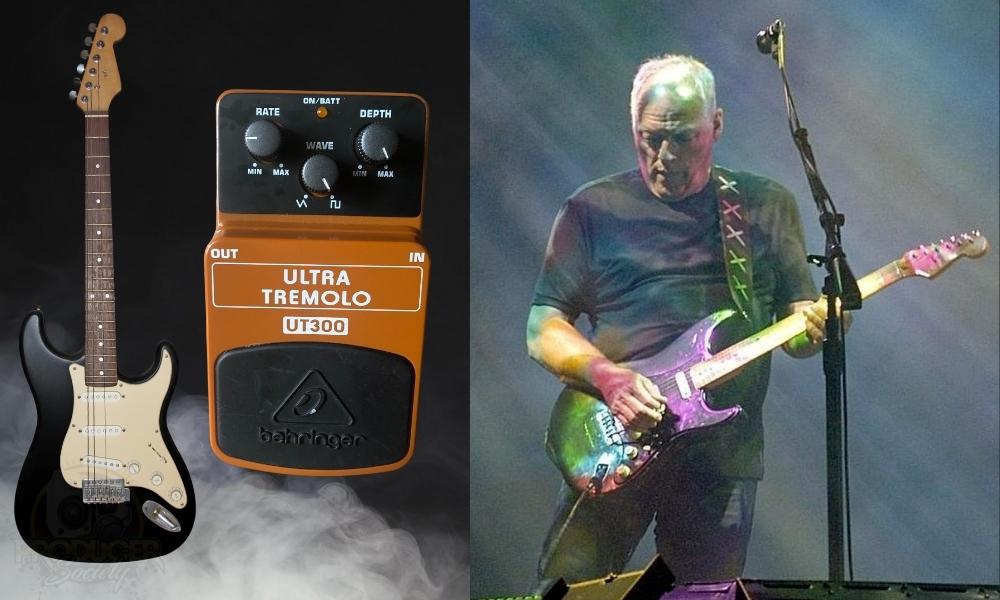
To get the classic guitar sound of Pink Floyd’s “Money,” you don’t need a ton of gear and accessories, and you definitely don’t need the exact equipment that David used on the album. The same thing goes for The Smith’s “How Soon Is Now.”
For this tutorial, I’ll be showing you an inexpensive way of getting the tones heard on “Money,” while also mentioning some of the real gear that Gilmour allegedly used in the recording of 1973’s Dark Side Of The Moon.
The first thing that you need is a Fender Stratocaster-style guitar. The specific model and brand aren’t what’s important, however.
1) Fender Stratocaster-style Guitar
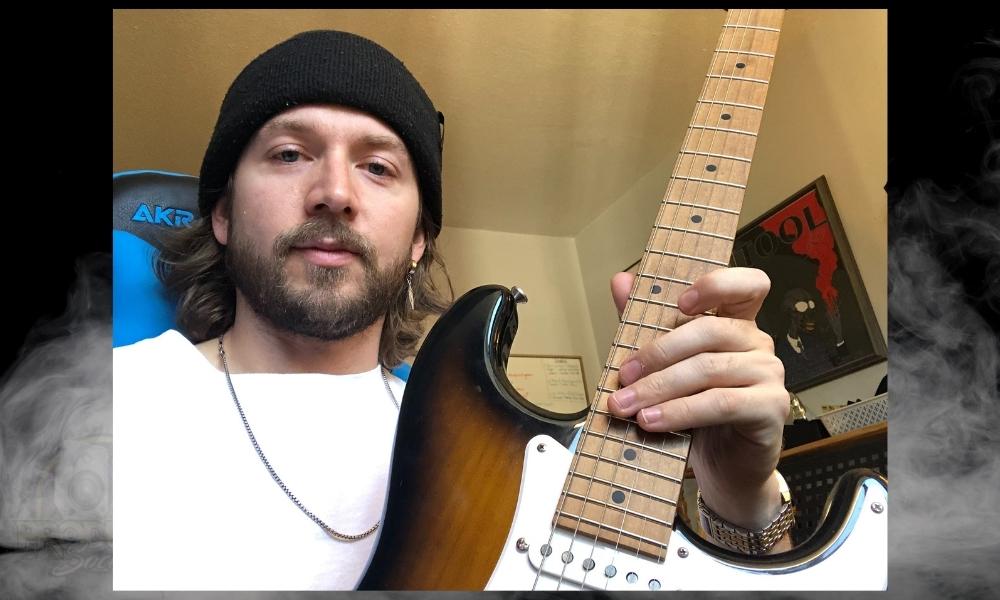
David Gilmour undoubtedly used a lot of equipment over the years but from what I’ve seen, the Fender Stratocaster was definitely a main-stay of his.
This guitar is going to bring you much closer to the Gilmour sound than a Les Paul or a similar guitar.
But a big part of the tone isn’t actually the guitar itself, it’s the single-coil pickups that are going to give you that twangy or “spanky” tone, as some people like to call it.
2) Single-Coil Pickups
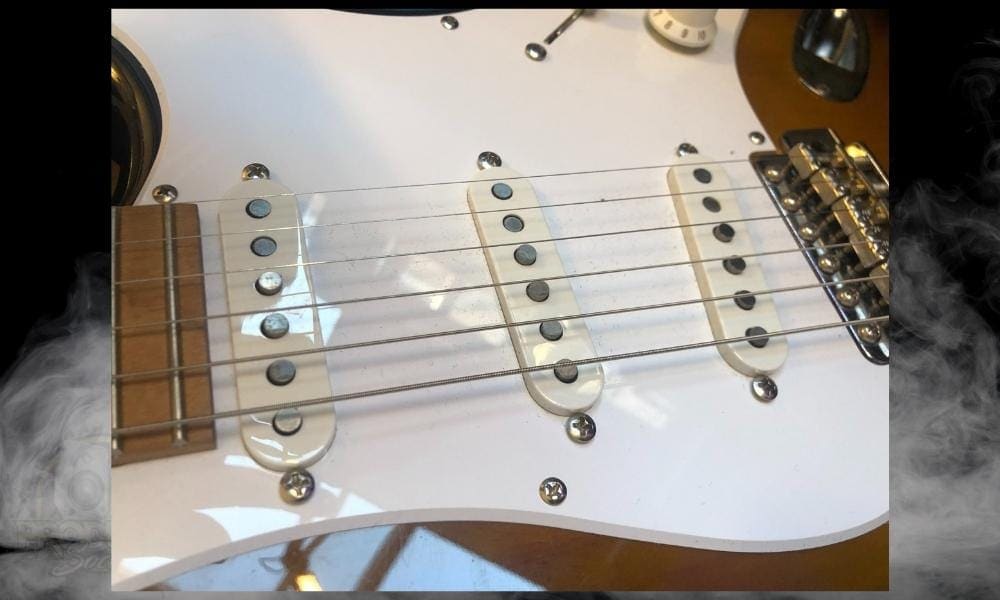
The single-coil pick-ups that come on Fender Stratocaster and Telecaster guitars are a huge part of their tone and sound.
Anybody who owns a guitar with dual humbuckers knows there is a big difference in tone when comparing single coils and humbuckers side-by-side.
As I was saying to you a moment ago, while having a Strat-style guitar will certainly help you get closer to the sound, it’s the pick-ups that really make the difference. The next thing we need is the tremolo pedal.
3) Tremolo Pedal
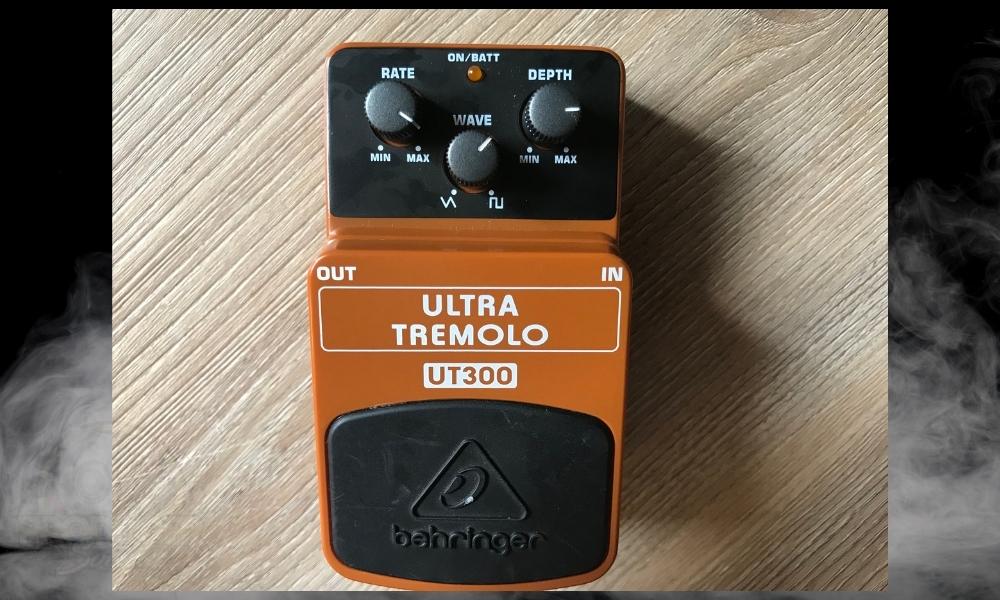
But it’s worth stating that there are some more tried-and-true tremolo pedals on the market like the BOSS TR-2. The UT300 isn’t made out of steel either, so it doesn’t have the durability.
I used it in my guide on how to use a tremolo pedal which worked perfectly because it didn’t cost me a fortune and the UT300 has all of the usual parameters that nearly all tremolo pedals also have.
4) Tweed-Style Amp
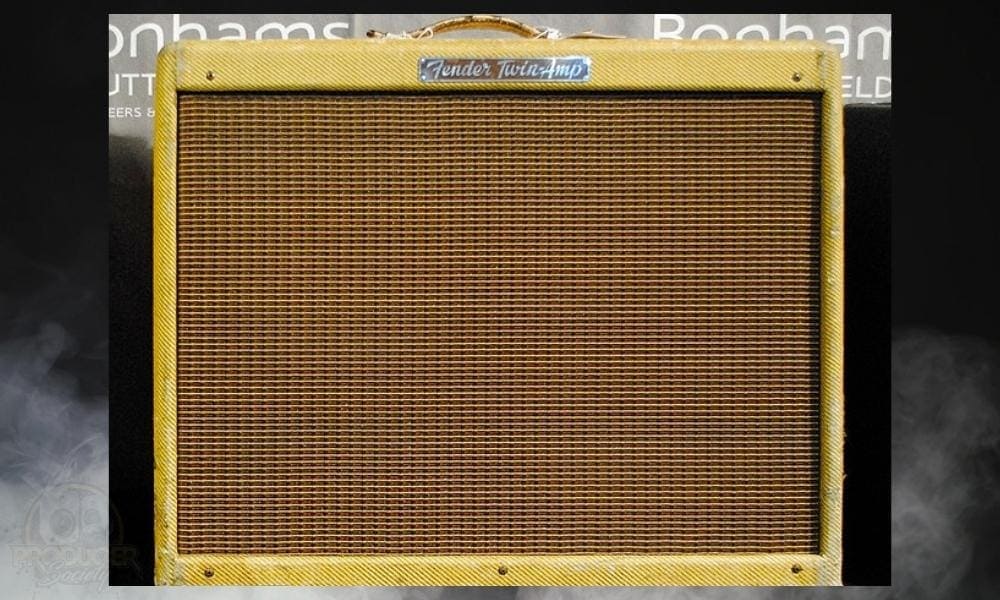
Like the Fender Stratocaster, while it’s certainly not the most important, it certainly wouldn’t hurt you to have a Fender amp like the one pictured above.
A Fender Twin or some other Tweed-style amp is going to work great for pretty much any classic rock because it seemed like a lot of those guys used them at that time.
5) Uni-Vibe Pedal or MXR Phase 90
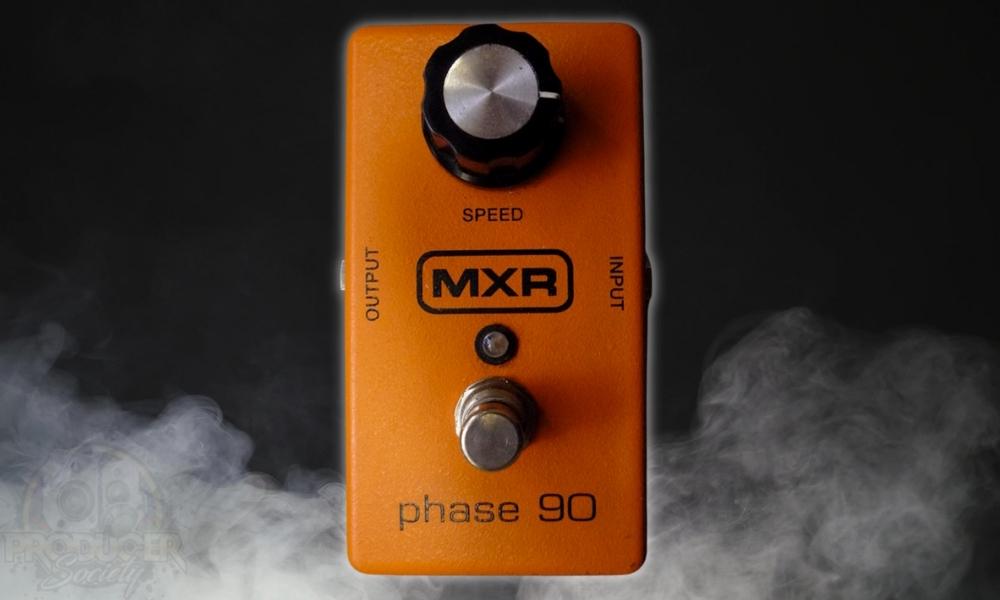
I believe David Gilmour did, in fact, use an MXR Phase 90 on his board after initially using a Uni-Vibe pedal.
The MXR Phase 90 is going to give you that psychedelic sound created by oscillating between low and high-pass filters.
I don’t have one of these pedals because I use a Line 6 M5 Stomp Box Modeler.
It’s a lot more versatile, while it does sacrifice some tone. And finally, we have the two sounds that nearly everyone uses.
6) Reverb and Delay
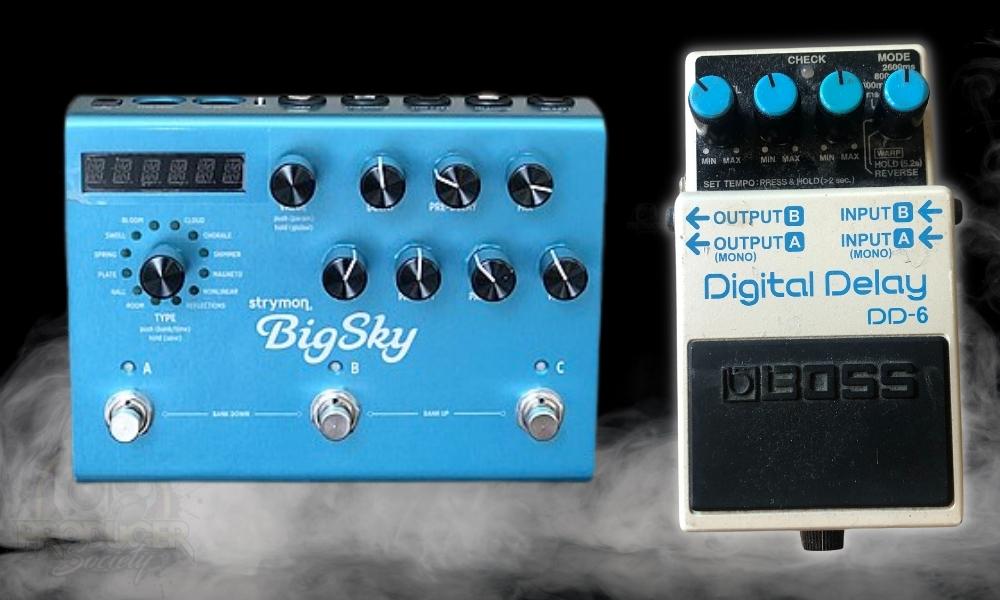
What kind of reverb and delay doesn’t really matter that much, in my opinion, because most of them do essentially the same thing.
Of course, there are differences in function and in quality, but any old delay or reverb will do for getting the sound you’re looking for. But without further ado, let’s dive into how to get the “Money” sound.
The Guitar Tremolo Setting for Pink Floyd’s “Tremolo”
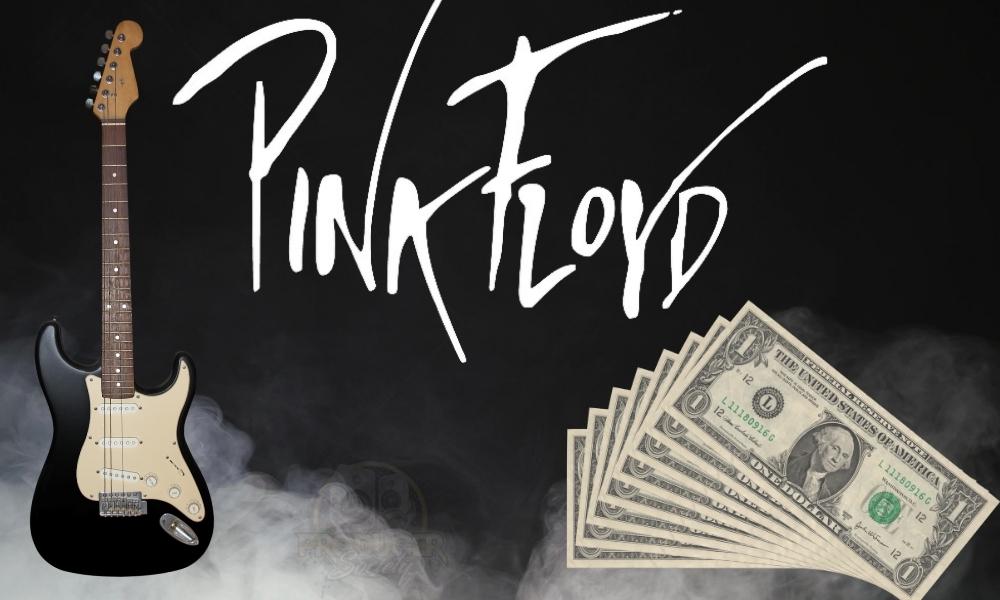
Main Tremolo Setting of “Money”

The settings shown above are a good guideline for sounding like the rhythm guitar part in “Money,” particularly the B Minor chord that can be heard throughout the song. To actually learn how to play it, this YouTube video is great.
Rate
1/16 Notes
![Money Setting [Rate] - What's the Tremolo Setting for Pink Floyd's Money](https://travelingguitarist.com/wp-content/uploads/2022/11/Money-Setting-Rate-Whats-the-Tremolo-Setting-for-Pink-Floyds-Money-copy-2.jpg)
While all three parameters on a standard tremolo pedal are important, I find it’s really the Rate and the Sine-Wave that make the most difference.
The depth is just how you adjust how much tremolo you’re using, but the other two parameters change the style and shape of the pedal effect, itself.
In the case of Pink Floyd’s “Money,” the song is in 7/4 – a fairly unusual time signature – and it has a 126 BPM.
The 126 BPM is particularly important because if you listen to the song, the tremolo speed is quite fast. This YouTube video here will give you an idea of how fast 1/16 notes are with a BPM of 126.
To achieve that rate, you want to set the tremolo pedal’s rate to almost 100% speed, at least on a Behringer UT300. If you find your tremolo setting is hard to get exactly right, you can also use a plugin.
Of course, this means you’ll have to use a computer to get the sound so it’s certainly a limitation. That said, there are some other tremolo pedals on the market that do use a time division knob, instead of just saying “rate.”
Wave
Almost Fully Square-Wave (60% to Maximum)
![Money Setting [Wave] - What's the Tremolo Setting for Pink Floyd's Money](https://travelingguitarist.com/wp-content/uploads/2022/11/Money-Setting-Wave-Whats-the-Tremolo-Setting-for-Pink-Floyds-Money-copy.jpg)
There’s a difference between a square-wave tremolo and a triangular-wave tremolo, but I don’t think it’s that remarkable, at least on the UT300. The difference is that one is more abrupt than the other.
Or, in other words, one flows a bit more while the other is jagged-sounding with a lot of peaks and valleys. To get what David Gilmour appears to have on the track, I would have the parameter so it’s set to 60% to the maximum.
Depth
75% to Maximum
![Money Setting [Depth] - What's the Tremolo Setting for Pink Floyd's Money](https://travelingguitarist.com/wp-content/uploads/2022/11/Money-Setting-Depth-Whats-the-Tremolo-Setting-for-Pink-Floyds-Money-.jpg)
And for the final parameter on the tremolo pedal, you have Depth, which, as I said before, simply adjusts how much tremolo you’re applying to the signal.
You could probably even experiment with cranking it right up to maximum because the tremolo effect on the guitar is pretty strong. And that’s pretty much it for the tremolo setting in Pink Floyd’s “Money.”
For the next section, I’m going to briefly some of the other settings you may want to use if you’re going to achieve the “Money” tone, including pick-ups, the pick you’re using, and other effects.
Other Guitar Settings for Pink Floyd’s “Money”
Another important aspect of the tone is whether you’re using the bridge, neck, or middle pickup.
Pick Ups
Treble Pickup
And for Pink Floyd’s “Money,” you should use the treble pick-up because if you try using the other ones, it’s not going to sound right.
I believe David is using the treble pickup for each guitar part as well, including the picked arpeggios and the B minor chord that can be heard throughout the song.
Pick or Fingerstyle (Pick Type)
Any Standard Pick
For the pick, I don’t think it’s going to matter what you use, as long as it isn’t steel or wooden. Some people have suggested using a coin like what Brian May used to do, but any old plectrum should work just fine.
Phaser
Light Phaser
When it comes to the phaser, you may want to have just a small oscillation between high and low frequencies, enough so it gives your tone a certain kind of “waviness.”
Reverb
Light Reverb
For the reverb, you want to keep it fairly light, but not too dry. The “Money” guitar tone certainly isn’t dry, and there is some spaciousness to it. Reverb is a great way of achieving that effect.
Delay
1/8 Note – Light Delay
And finally, we have the delay pedal. A 1/8th note delay with the mix knob or wet knob turned down fairly low should give you enough to work well with the reverb and create that spacey Pink Floyd vibe.
Where to Put The Tremolo In Your Signal Chain
Where you put the tremolo pedal in your signal chain is a factor in how it’ll sound. You want to have it near the end with time-based and modulation FX, assuming your guitar is the start of your chain.
The following signal chain should give you an idea of how to set it up. Also, it’s not totally necessary to put a delay in the FX Loop, but I think it’s the best way to go as I’ve said in my Looper Pedal/FX Loop guide.
Delay (FX Loop) > Amp > Reverb > Tremolo > Phaser > Drive > EQ > Compression > Wah > Guitar
Other Articles You May Be Interested In
- What’s the Tremolo Setting for Boulevard of Broken Dreams?
- What’s the Tremolo Setting for “Gimme Shelter?” [EASY]
- How to Use A Vibrato Pedal [An Illustrated Tutorial]
- How to Use A Volume Pedal As An Expression Pedal [SIMPLE]
- How To Use A Digitech Whammy Pedal [The Ultimate Guide]
Important Things to Note About Pink Floyd’s “Money”
1) Your Effects May Vary
All of the effects and the parameters that I’ve listed throughout the article are contingent upon my gear so yours may be just a bit different. Keep that in mind when trying things out with your own equipment.
2) This Is Meant To Be Cost Effective
Obviously, David Gilmour used much better equipment than what we’ve got here, but who has $50,000 worth of guitars, amps, effects, and other recording gear?
Please spare me the angry emails about how he used such-and-such-a vintage effect that’s no longer on the market.

 Written By :
Written By :
